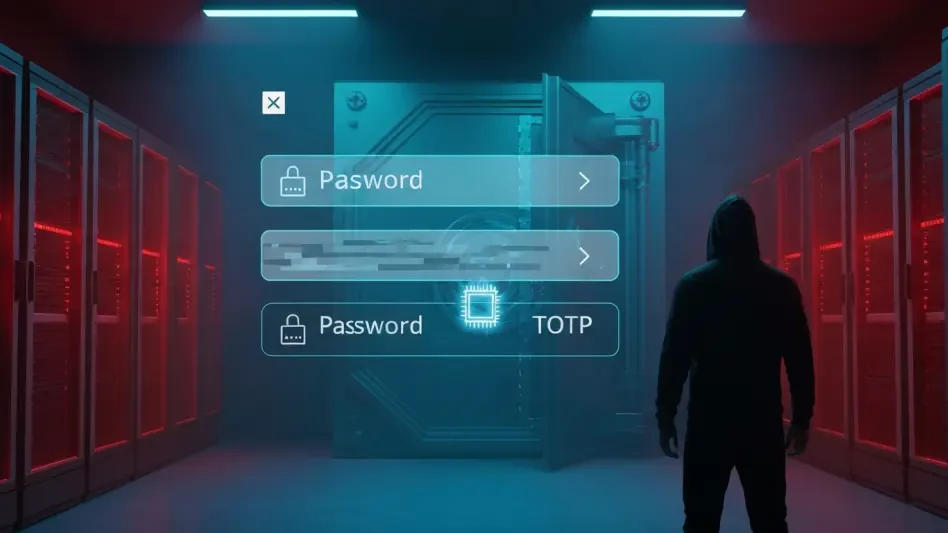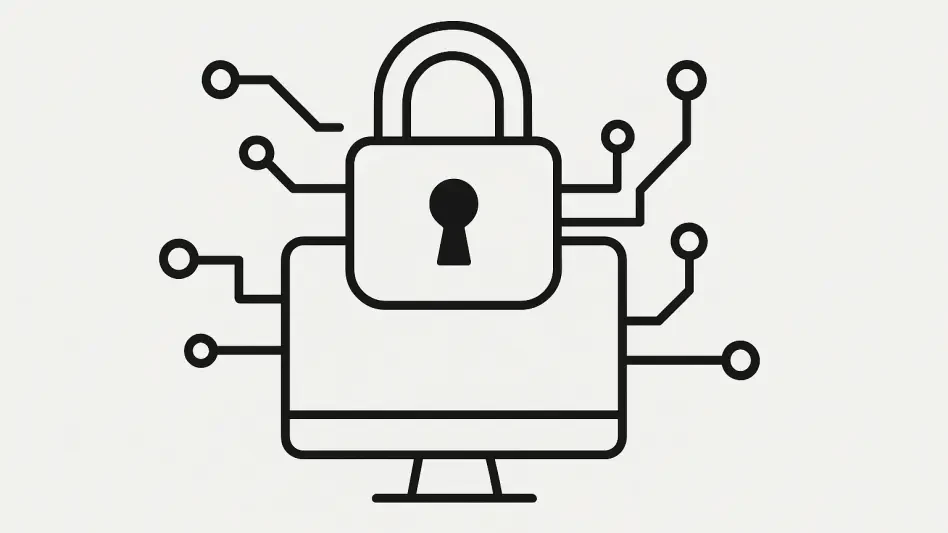In a digital landscape where cybersecurity threats evolve at an unrelenting pace, staying ahead of malicious actors requires tools that are not only powerful but also adaptable to the latest technologies and challenges. Kali Linux, the Debian-based distribution renowned for its role in ethical hacking and penetration testing, has once again raised the bar with its third update of the year. Released by Offensive Security (OffSec), this iteration brings a host of advancements that cater to both seasoned professionals and newcomers in the field of digital forensics and security auditing. From groundbreaking hardware compatibility to an expanded suite of hacking utilities, this update ensures that Kali remains a cornerstone for anyone serious about identifying vulnerabilities and securing systems. The enhancements introduced are not mere incremental changes; they reflect a strategic vision to address emerging threats in areas like mobile and automotive security while refining the user experience. As the cybersecurity community eagerly explores this release, it’s clear that OffSec is committed to pushing boundaries and maintaining Kali’s reputation as an indispensable platform. Let’s delve into the specifics of what makes this update a significant milestone in the ongoing evolution of cybersecurity tools.
Breaking New Ground with Hardware Compatibility
The spotlight of this Kali Linux release shines brightly on the reintroduction and expansion of Nexmon support, a patched firmware designed for specific wireless chipsets such as Broadcom and Cypress. This feature enables critical functionalities like monitor mode for packet sniffing and injection mode for sending custom raw packets, both essential for effective wireless security testing. Particularly for users of Raspberry Pi devices, including the latest models, this enhancement transforms built-in Wi-Fi capabilities into robust tools for penetration testing. The ability to perform advanced wireless assessments on budget-friendly hardware is a game-changer, ensuring that financial constraints do not limit access to high-level cybersecurity resources. Beyond Raspberry Pi, Nexmon’s compatibility now extends to a broader range of devices, showcasing a deliberate effort by OffSec to make Kali a versatile platform across various setups. This move not only enhances accessibility but also reinforces the distribution’s relevance in an era where diverse hardware plays a pivotal role in security workflows.
Further emphasizing the focus on hardware, this update reflects a broader mission to democratize cybersecurity tools by supporting an array of devices that might otherwise be overlooked. The seamless integration of Nexmon support addresses a gap that was temporarily widened by earlier kernel packaging changes, now resolved to benefit a wide user base. For professionals and hobbyists alike, the ability to conduct sophisticated wireless testing without investing in expensive, specialized equipment is a significant advantage. This approach also aligns with the growing trend of leveraging affordable and widely available hardware for complex tasks, ensuring that Kali remains a practical choice for diverse environments. By prioritizing hardware compatibility, OffSec demonstrates an understanding of the varied needs within the cybersecurity community, fostering an inclusive ecosystem where cutting-edge testing is within reach for all.
Expanding the Toolkit for Modern Threats
Kali Linux 2025.3 comes equipped with an impressive array of ten new hacking tools, each crafted to address the multifaceted nature of contemporary cybersecurity challenges. Among the notable additions are Caido and its command-line counterpart, which offer a comprehensive toolkit for web security auditing through distinct client and server components. Similarly, Detect It Easy proves invaluable for forensic analysis by aiding in file type identification, while Gemini CLI integrates AI capabilities directly into the terminal for enhanced command-line efficiency. Other tools like krbrelayx, focused on Kerberos relaying attacks, and patchleaks, which assists in identifying and analyzing security patches, further enrich the arsenal. This diverse set ensures that users have the resources needed to tackle everything from network penetration to vulnerability exploitation, keeping pace with an ever-shifting threat landscape.
Beyond the individual functionalities, the introduction of these tools signals OffSec’s proactive stance in adapting to emerging technologies and attack vectors. Utilities such as llm-tools-nmap, which combines large language models with traditional network scanning, highlight an innovative blend of AI and cybersecurity practices. This not only enhances the precision of scans but also streamlines complex workflows for users. Meanwhile, tools like ligolo-mp for multiplayer pivoting and vwifi-dkms for creating dummy Wi-Fi networks cater to specific testing scenarios, ensuring comprehensive coverage of potential vulnerabilities. The breadth of these additions underscores a commitment to versatility, equipping Kali users with the means to confront both conventional and cutting-edge threats. As cyber adversaries continue to refine their methods, this expanded toolkit positions Kali as a formidable ally in securing digital assets.
Pioneering Mobile and Automotive Security Solutions
Kali NetHunter, the mobile-focused variant of Kali Linux, receives substantial upgrades in this release, particularly in the realm of wireless testing capabilities. Devices like the Samsung Galaxy S10 now support internal monitor mode and injection on both 2.4GHz and 5GHz bands, marking a significant milestone for budget-conscious users seeking powerful mobile penetration testing options. This development, achieved through collaboration with the Nexmon team and community contributors, transforms affordable smartphones into potent tools for wireless security assessments. By extending such advanced features to widely accessible devices, OffSec ensures that mobile cybersecurity testing is not an exclusive domain but a practical pursuit for a broader audience, addressing the growing importance of securing personal and IoT devices in interconnected environments.
In parallel, the CARsenal toolset, dedicated to automotive security, undergoes a transformative update with a refreshed user interface and expanded functionalities. New features such as RFCOMM Connect and enhanced simulation tools, now integrated under a unified Simulator framework, provide deeper insights into vehicle systems. The addition of a dedicated Metasploit-Framework tab for automotive modules further empowers users to explore and mitigate vulnerabilities in connected cars. As vehicles become increasingly integrated with digital networks, the risk of cyber threats in this space escalates, making these updates timely and critical. Kali’s focus on automotive cybersecurity not only highlights its adaptability to niche but vital areas but also positions it as a leader in addressing the security challenges of tomorrow’s smart technologies, ensuring that users are equipped to safeguard even the most unconventional targets.
Enhancing User Experience and Workflow Efficiency
Attention to user experience takes center stage in Kali Linux 2025.3 with subtle yet impactful refinements that streamline daily operations for cybersecurity professionals. A prime example is the update to the Xfce panel plugin for VPN IP monitoring, which previously displayed only the IP of the first VPN connection. Now, users can select specific network interfaces to monitor, offering greater control and flexibility for those managing multiple connections during testing scenarios. Such enhancements, though seemingly minor, address real-world pain points, allowing for more precise network configurations and reducing the likelihood of oversight in complex setups. This focus on usability ensures that Kali remains intuitive, catering to the practical needs of its diverse user base.
Complementing these interface improvements are significant upgrades to the infrastructure supporting virtual machine environments. OffSec has revisited the use of HashiCorp’s Packer and Vagrant tools, optimizing the creation and management of testing setups. Updates include consistent pre-seed configurations for installers and an upgrade to modern build-script standards, facilitating smoother automation across various platforms. These backend enhancements minimize the technical hurdles faced by users, whether they are setting up environments for the first time or managing sophisticated testing labs. By prioritizing both frontend usability and backend efficiency, Kali Linux solidifies its role as a platform that not only delivers powerful tools but also ensures they are accessible and manageable, allowing focus to remain on security tasks rather than setup complexities.
Strategic Decisions for Future-Ready Compatibility
Kali Linux 2025.3 also marks a pivotal shift in hardware support strategy, with OffSec making the calculated decision to discontinue support for the ARMel architecture. Following Debian’s lead in phasing out this older framework, the move impacts legacy devices such as the Raspberry Pi 1 and similar models with limited user bases. While this may disappoint a small segment of users reliant on outdated hardware, it reflects a pragmatic approach to resource allocation. By redirecting efforts toward emerging architectures like RISC-V, OffSec ensures that Kali remains aligned with technological advancements, prioritizing compatibility with modern systems that are better equipped to handle the demands of contemporary cybersecurity tasks. This decision underscores a balance between maintaining broad accessibility and focusing on future-ready solutions.
Additionally, for newer ARM-based devices like the Raspberry Pi 5, there is a clear recommendation to adopt the 64-bit version over the 32-bit alternative, consolidating support under a single, more capable image. This strategic consolidation not only simplifies maintenance but also optimizes performance for users leveraging the latest hardware. Such forward-thinking choices highlight a commitment to staying ahead of industry trends, ensuring that resources are invested in areas with the greatest potential impact. By shedding support for obsolete architectures while enhancing compatibility with cutting-edge platforms, Kali Linux positions itself as a dynamic toolset that evolves in tandem with the rapid pace of technological innovation, ready to meet the challenges of the coming years.
Reflecting on a Milestone in Cybersecurity Evolution
Looking back, the release of Kali Linux 2025.3 by Offensive Security marked a defining moment in the ongoing journey of cybersecurity tools. The enhancements in hardware compatibility through Nexmon support opened doors for wireless testing on a range of devices, while the addition of ten innovative hacking tools equipped users to tackle diverse and evolving threats. Significant strides in mobile and automotive security via Kali NetHunter and CARsenal addressed critical emerging areas, ensuring that connected devices and vehicles were not left vulnerable. User experience saw thoughtful improvements, and strategic hardware decisions paved the way for future advancements. Moving forward, the cybersecurity community can build on this robust foundation by exploring the new tools and capabilities, contributing to community-driven documentation, and staying engaged with OffSec’s roadmap. As threats continue to morph, keeping abreast of such updates and integrating them into regular practice will be essential for maintaining secure digital environments, ensuring that Kali’s legacy of innovation continues to inspire and protect.








